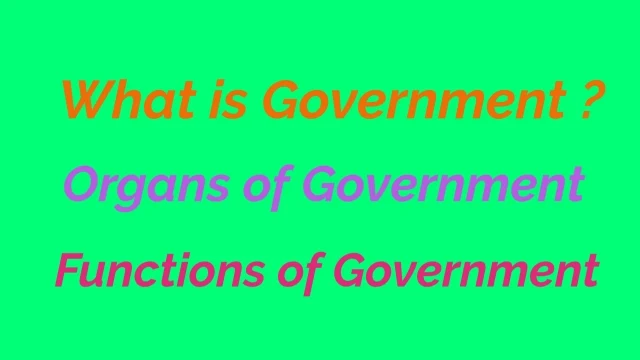
A state has a lot of functions to do for running a country smoothly. The government is a political body that runs the country. The government operates all the functions which are required to run a country.
Government is a body of political units which have the power to rule a country. This body is made of different organs which are interrelated with each other to perform various functions to run a country.
There are three organs of government which are as follows:-
1. Executive
2. Legislature
3. Judiciary
They are the organs of government that carry out the functions of the state. The organs of the government are also called arms of the government because these organs help to conduct the works of the government. In the absence of these organs, the government fails to maintain peace and security in the state.
The Executive
The executive is a branch of the government that carries out and implements the plan policies rules and laws to maintain peace and security in society and conduct other various activities to run the country.
This organ consists Prime minister, Deputy Prime minister, cabinet ministers, and other ministers and civil service. The main responsibility of this organ is to implement decisions, laws, and policies.
Functions and Duties
- To conduct day-to-day administrative functions to run a country,
- To implement plans, policies, and programs Policies for the development of the nation,
- To prepare and issue a budget
- To sign international treaties and conventions and establish good relations with the international community
The Legislature
Legislature is a branch of government that makes laws to govern a country. The legislature is also known as Parliament. Parliament makes laws and amends laws as per the demand of the country. The head of the Legislature is the speaker of parliament.
Functions and Duties
- The primary function of parliament is to make laws.
- To conduct debates of opinions to arrive at a great educative value for money of the projects for the people
- the power of increasing tax is only in the hand of the Legislature
- To supervise the executive
- To elect a prime minister and president and remove them through impeachment
The Judiciary
The judiciary is the arm of government that interprets the Constitution. It ensures that people obey the laws of the country. The Supreme Court of Nepal is the highest and final Court of Nepal. Its decision is the final decision. All other courts are under the Supreme Court. The High Court, District Court, and Judicial Committee at local level have to follow instructions, orders, decisions, and principles made by the Supreme Court.
Functions and Duties
- To render fair and impartial justice to the people
- To explain /interpret the laws and apply them
- To protect the fundamental rights of citizens and provide remedies if fundamental rights are violated
- To check the constitutionality of the law made by the Legislature
- To check the activities of the Executive whether it's activities are legal or illegal
Summary
The government represents the state and performs all those functions that are required to operate a country smoothly.
There are three main organs of government. They are Executive, Legislative, and Judiciary.
The executive branch implements the plan and policies or laws and rules made by the Legislature.
The Legislation makes law according to the requirements of society. It also makes necessary plans and policies for the development of the nation.
The Judiciary interprets and adjudicates law provides justice to the people and prevents other branches of government from encroaching rights of the people.
